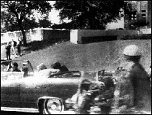10 Points of Agreement on Political Assassinations
October 27, 2012
Coalition on Political Assassinations (COPA) and the Research Community
This document is based on a consensus or large majority of the ballistics, forensic, photographic, legal, medical experts, academicians, journalists, historians, authors and serious independent researchers who have examined American political assassinations from the 1960s to the present.
We have had five decades of research, court cases, released records, official investigations, and independent investigations on the major political assassinations that changed the direction of America since the early 1960s. These statements represent the best evidence and what we now know on the verge of the 50th anniversary of the assassination of President John F. Kennedy in the case of his assassination and in the cases of Dr. Martin Luther King, Jr., and Robert F. Kennedy with similar patterns in other political assassinations and attempts.
They are offered in the hope that the need for justice and the claims of history will prevail in a democratic society that has had democracy stolen by these heinous acts.
Point 1
We do not believe in conspiracy “theories”. We work with factual evidence of conspiracy in unsolved crimes.
Point 2
Official ballistics, forensic, legal, photographic and autopsy investigations were flawed and led to false conclusions.
Point 3
We find wrongful convictions of alleged assassins. New evidence of innocence or exoneration continues to emerge.
Point 4
We find obstruction of justice and official cover-up by police, coroners, government and intelligence agencies, official investigations, D.A offices, and attornies general.
The best evidence that has come to light in these cases reveals the following in political assassinations:
§ Destruction and alteration of evidence and planted evidence
§ Manipulation and control of national and local media
§ Planning the investigative conclusions in advance
§ Complicity in pressure for false conclusions
§ Lack of investigation of alternative conclusions
§ Secrecy and classification of the historical records and evidence
§ Refusal to examine new emerging evidence or review convictions
§ Lack of due process or legal malfeasance in court trials
§ Direct concealment of involvement in or with the conspiracy or conspirators
Point 5
We find a pattern of unusual deaths, violent murders, false suicides and threats to key witnesses.
Point 6
We find evidence of civilian and military intelligence agency involvement in crimes and cover-up.
Point 7
The best evidence points to specific suspects and accessories after the fact.
Point 8
We find a pattern of political assassination as a tool of state repression and control and foreign policy.
Point 9
Legitimate questions remain. There are open cases and closed files.
Point 10
The claims of justice and history must be satisfied.
